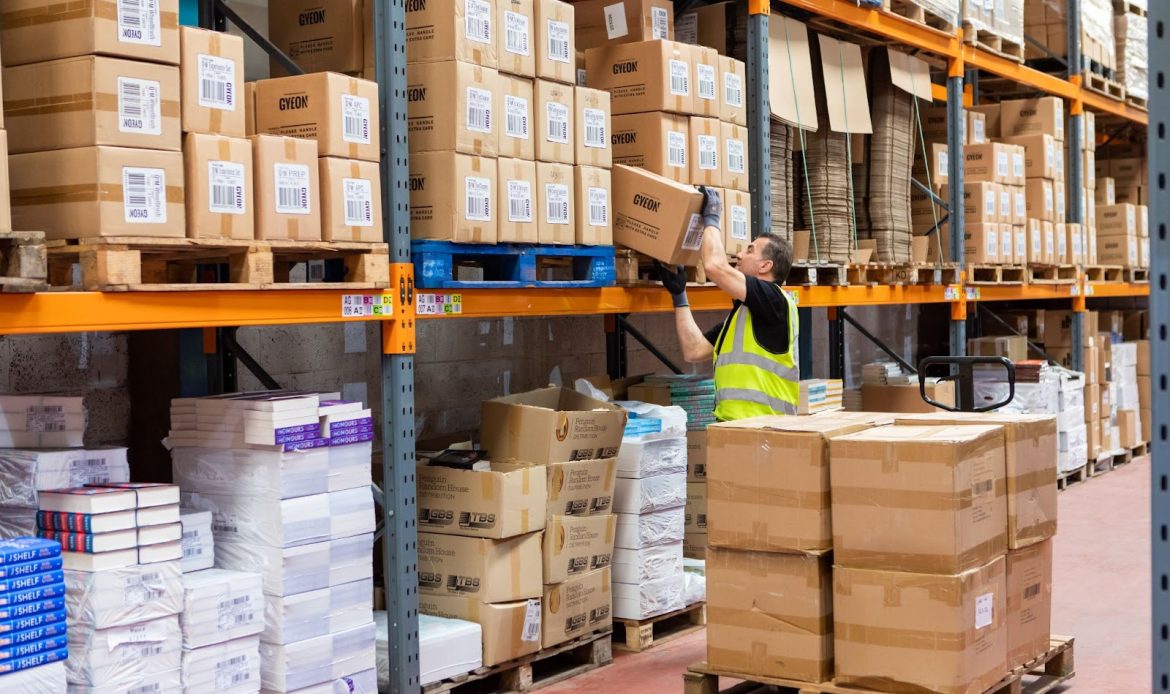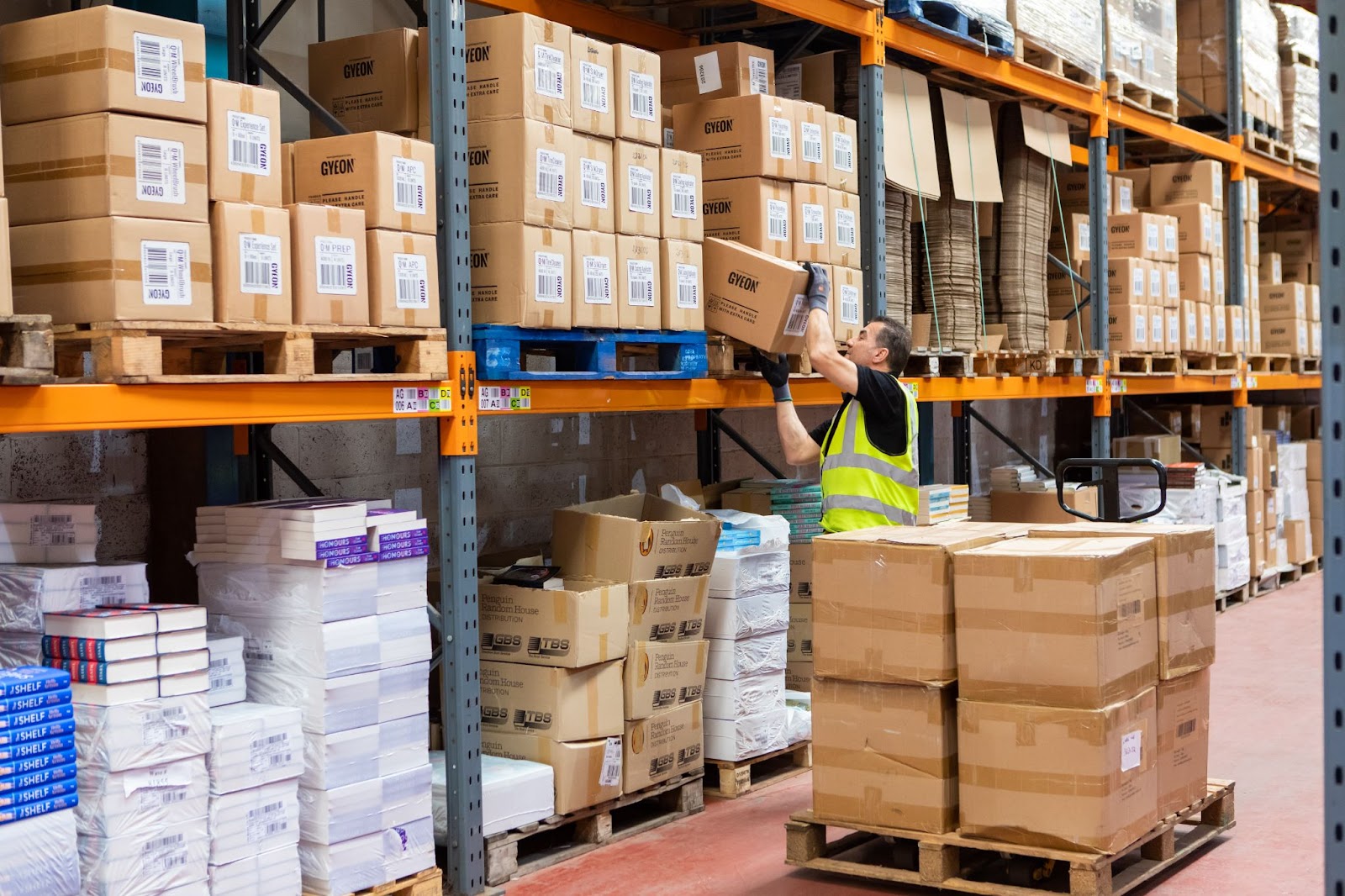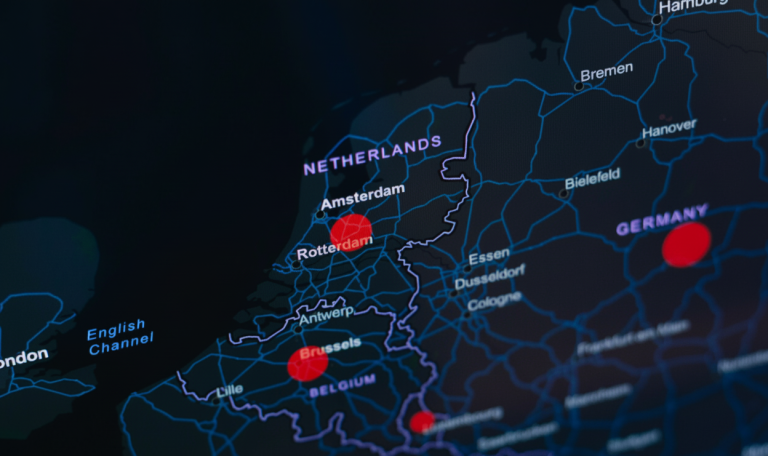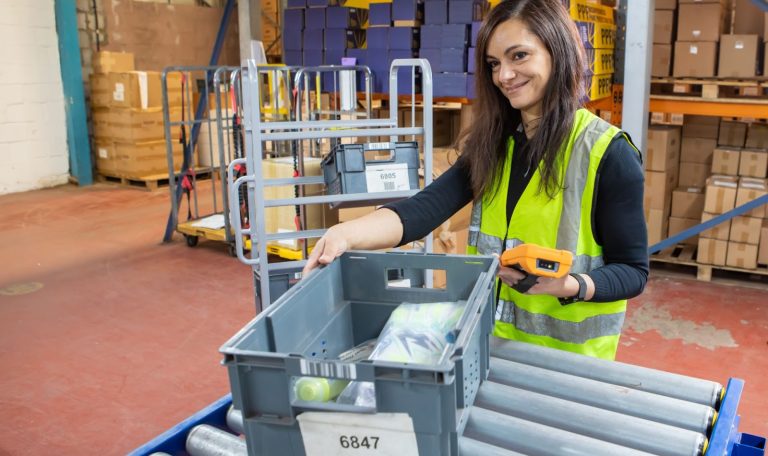Article Summary:
- Hybrid fulfilment combines in-house, 3PL, and dropshipping for flexible logistics
- Ideal for fast-growing D2C and B2B eCommerce brands
- Supports multi-channel sales across Shopify, Amazon, and more
- Improves scalability, cost-efficiency, and delivery speed
- Reduces risk by avoiding reliance on a single fulfilment method
- Green Fulfilment enables hybrid logistics with sustainable, tech-powered solutions
Hybrid order fulfilment is a flexible and scalable approach to logistics that allows eCommerce brands to combine multiple fulfilment methods to suit their needs. Instead of relying solely on one method, such as in-house operations or outsourcing everything to a third-party logistics provider (3PL), a hybrid model blends strategies like in-house fulfilment, 3PL services, and dropshipping to create a tailored supply chain solution through a fulfilment warehouse or network of providers.
For fast-scaling D2C and B2B brands navigating multi-channel growth, hybrid fulfilment offers the adaptability needed to meet customer expectations across platforms, regions, and order types.
Understanding Hybrid Order Fulfilment
What does hybrid order fulfilment mean?
Hybrid order fulfilment means using more than one method to store, pick, pack, and ship customer orders. For example, a business might ship core SKUs from its own warehouse, outsource high-volume items to a 3PL logistics provider, and use dropshipping for niche or bulky products. This flexibility helps brands streamline operations and reduce risk without compromising on speed or customer experience.
Hybrid fulfilment is particularly useful for companies juggling different order volumes, geographical markets, or multiple sales channels. It supports agility and helps avoid bottlenecks during peak periods.
How hybrid fulfilment supports D2C and B2B operations
Many brands today operate in both direct-to-consumer and business-to-business spaces. Hybrid fulfilment is ideal for this dual model. You might process small parcels in-house for D2C orders and use a B2B warehouse to handle pallets for trade customers.
It also supports:
- D2C logistics for fast, tracked delivery and branded packaging
- B2B warehousing logistics with bulk shipping, extended storage, and EDI integration
- Efficient resource use, such as storing fast-moving products close to customers
Types of Fulfilment Strategies in a Hybrid Model
In-house fulfilment
This is when a business handles all fulfilment internally. It works well for small product ranges, brands with bespoke packaging needs, or those looking to maintain tight control over customer experience.
Pros:
- Full control over inventory and packing
- Customisation options
- No third-party costs
Cons:
- Requires warehouse space, staffing, and systems
- Can be difficult to scale
Dropshipping
Dropshipping lets a supplier ship products directly to the customer. You don’t hold inventory, which lowers overheads.
Best for:
- Testing new product lines
- Long-tail or slow-moving SKUs
- International orders where in-house fulfilment would be costly
Challenges: Less control over stock, quality, and delivery speed.
Third-party logistics (3PL)
3PL partners handle everything from receiving stock to shipping orders. This is ideal for growing businesses ready to scale up without investing in infrastructure.
A 3PL like Green Fulfilment provides:
- Inventory storage in the UK and the EU
- D2C and B2B fulfilment
- Returns handling and real-time reporting
Hybrid fulfilment
Rather than choosing one method, hybrid fulfilment allows brands to use all three strategically. For instance:
- In-house fulfilment for local or custom orders
- A 3PL for high-volume and international shipping
- Dropshipping for niche or oversized products
Benefits of a Hybrid Fulfilment Model
Agility across multiple sales channels
eCommerce fulfilment is rarely limited to one platform. Whether you sell on your website, Amazon, eBay, or in physical retail, hybrid fulfilment makes it easier to manage different order types and volumes. This supports smoother multi-channel logistics.
Cost efficiency and scalability
Use internal resources where they make sense and outsource where it saves time or money. Hybrid fulfilment gives you the freedom to scale without overcommitting to one method.
Example: Keep control of branded D2C orders, but outsource bulky B2B shipments to a fulfilment warehouse.
Risk mitigation
Relying on a single fulfilment method makes you vulnerable to disruptions. A hybrid setup spreads risk. If one method fails (e.g., warehouse delay), another can step in.
Better customer experience
Faster delivery, more accurate order tracking, and regional shipping options all help boost satisfaction. Hybrid fulfilment allows you to meet rising customer expectations without stretching your team.
Is Hybrid Fulfilment Right for Your Business?
Signs you might benefit from a hybrid model
You should consider hybrid fulfilment if:
- You sell across multiple platforms and channels
- You serve both consumers and trade customers
- You want to test new markets or product lines
- You manage different SKUs with different fulfilment needs
- You need to balance cost savings with control
Common challenges and how to manage them
Hybrid fulfilment can be complex. Coordinating stock across multiple systems, providers, and locations can lead to confusion or errors if not managed properly.
Solutions:
- Use a platform that centralises data across all fulfilment streams
- Standardise processes where possible
- Choose partners who offer transparent reporting and inventory tracking
How technology enables hybrid fulfilment success
Technology is the backbone of any successful hybrid strategy. Platforms like Green Fulfilment’s Green Portal offer:
- Real-time stock visibility
- Multi-channel order management
- Return handling across fulfilment methods
- Integrated reporting for smarter decisions
Hybrid Fulfilment and Multi-Channel Logistics: What’s the Link?
Hybrid fulfilment is how you execute effective multi-channel logistics.
Multi-channel logistics involves coordinating inventory, orders, warehousing, and delivery across various platforms, including Shopify, Amazon, Etsy, and others. Hybrid fulfilment enables this by allowing different fulfilment models to support each channel as needed.
Key components include:
- Unified order management across all sales channels
- Accurate inventory tracking across warehouses, 3PLs, and suppliers
- Flexible warehousing strategies to suit demand and product type
- Streamlined returns management regardless of where the sale was made
- Automation to improve efficiency and reduce errors
Benefits:
- Wider customer reach
- Consistent brand experience
- Better inventory turnover and fewer stockouts
Example: An eco-homeware brand might handle website orders in-house, ship Amazon orders via a 3PL, and dropship bulky items from their manufacturer. Hybrid fulfilment makes this possible.

How Green Fulfilment Supports Hybrid Order Fulfilment
Flexible, scalable warehousing
Green Fulfilment offers D2C and B2B fulfilment from UK and EU warehouses. We support high-volume pick and pack, pallet storage, and custom packaging. Whether you’re fulfilling one subscription box or a bulk wholesale order, our network is built to adapt.
Go Green Platform for visibility and control
Our in-house technology gives you full oversight of your fulfilment operations. Features include:
- Real-time inventory tracking
- Order and return status updates
- Channel integrations
- Custom reporting dashboards
Built-in sustainability across every model
As a certified B Corp, sustainability is embedded in how we work. Our sustainable fulfilment services include:
- Recyclable packaging and paperless dispatch
- Carbon-conscious delivery routes
- Energy-efficient warehouses
This means you can scale responsibly, without compromising your brand values.
Embrace Hybrid Fulfilment for Smarter Growth
Hybrid fulfilment lets growing eCommerce brands take a flexible, low-risk approach to logistics. It supports both D2C and B2B models, strengthens your multi-channel logistics, and offers operational resilience in uncertain times.
With a partner like Green Fulfilment, you also gain access to a tech-driven platform, sustainable fulfilment practices, and a reliable team committed to helping your business grow.
Book a free consultation to explore how hybrid fulfilment can support your next stage of growth.
FAQs About Hybrid Order Fulfilment
What is hybrid order fulfilment in eCommerce?
Hybrid order fulfilment is a strategy that combines in-house fulfilment, 3PL services, and dropshipping to optimise cost, speed, and flexibility across channels.
What is multi-channel logistics?
Multi-channel logistics is the management of orders, inventory, storage, and delivery across different sales channels like online stores, marketplaces, and retail outlets.
What is an example of a multi-channel distribution?
A skincare brand selling on Shopify, Amazon, and in physical shops, using in-house fulfilment for web orders, a 3PL for Amazon, and dropshipping for larger kits.
Does hybrid fulfilment require a 3PL?
Not always. Hybrid fulfilment can be as simple as combining in-house fulfilment with dropshipping. However, many brands benefit from 3PLs for scale and efficiency.
Is hybrid fulfilment good for growing brands?
Yes. It gives you the flexibility to scale, test new ideas, and reduce risk without overcommitting to one fulfilment model.



